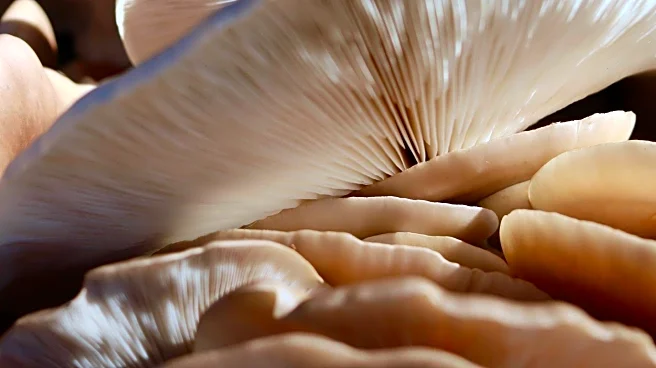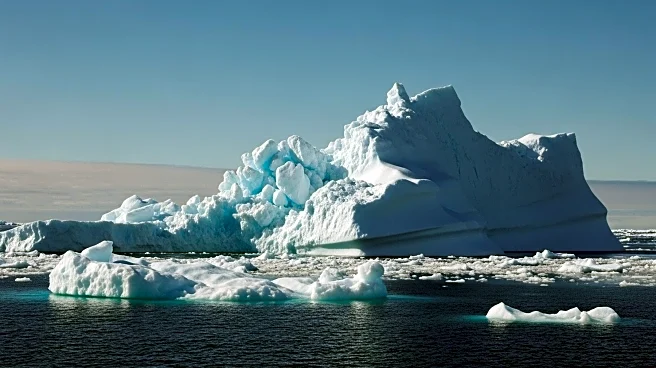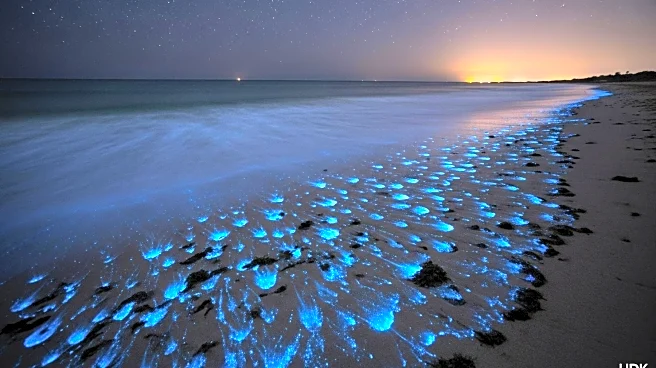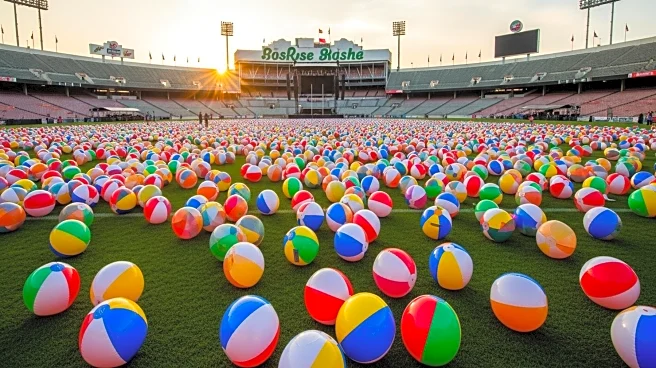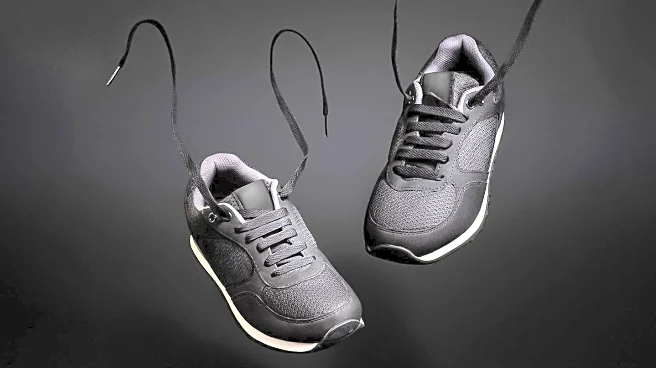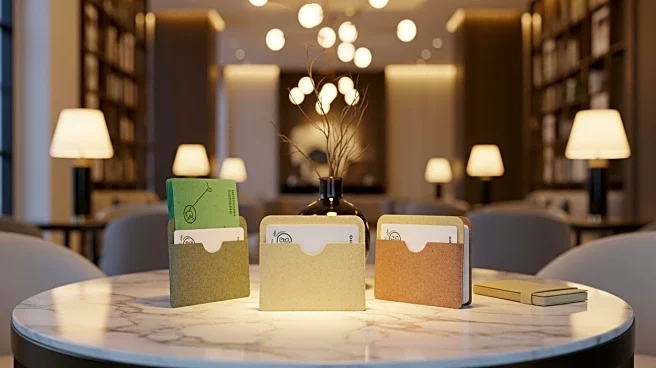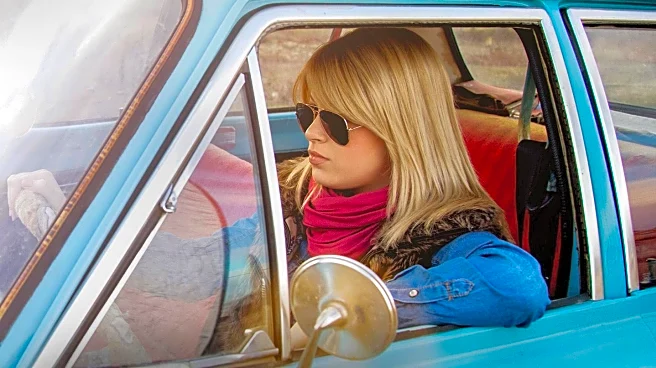What is the story about?
What's Happening?
Sam Shoemaker, an artist and mycologist, successfully completed a 26.4-mile open-water journey from Catalina Island to San Pedro in a kayak made entirely from mushrooms. This achievement marks the longest recorded voyage in a kayak constructed from mycelium, the network of threads that support fungi growth. Shoemaker's kayak, grown from Ganoderma polychromum mycelium, showcases the potential of fungi as an environmentally-friendly alternative to plastics used in aquatic recreation. The kayak was developed over several months, involving the cultivation of mycelium in a mold filled with hemp substrate. Shoemaker's journey, accompanied by a fin whale for part of the trip, took 12 hours and was supported by Fulcrum Arts, an organization promoting art and science collaborations.
Why It's Important?
Shoemaker's voyage underscores the potential of mycelium-based materials as sustainable alternatives to conventional plastics, which are often criticized for their environmental impact. The success of the mushroom kayak could inspire further exploration and innovation in using fungi for various applications, including boats, surfboards, and other aquatic equipment. This development is significant as it aligns with growing global efforts to reduce plastic pollution and promote biodegradable materials. The project also highlights the role of artists and designers in pioneering new technologies and materials, potentially influencing industries to adopt more eco-friendly practices.
What's Next?
Shoemaker plans to continue his work with mycelium materials, sharing his research and methodologies through an open-source compendium. He aims to inspire others to explore and improve upon his designs, potentially leading to more ambitious projects and wider adoption of fungal materials. A full exhibition of his work, including the mushroom kayak, is scheduled for October at Fulcrum Arts in Pasadena. The success of Shoemaker's voyage may encourage scientific institutions to take fungal innovation more seriously, potentially leading to collaborations and advancements in sustainable material development.
Beyond the Headlines
The use of mycelium as a material raises ethical and cultural questions about the future of sustainable design and the role of nature in technological innovation. As mycelium-based products gain popularity, there may be shifts in consumer preferences towards biodegradable and eco-friendly options. This could influence industries to reconsider their reliance on synthetic materials and explore natural alternatives. Additionally, the collaboration between artists and scientists in this field highlights the importance of interdisciplinary approaches in addressing environmental challenges.
AI Generated Content
Do you find this article useful?
